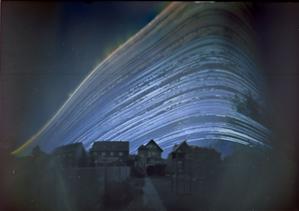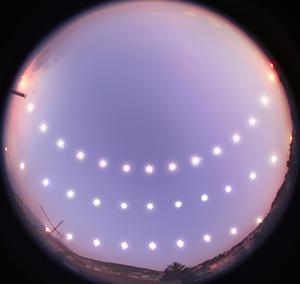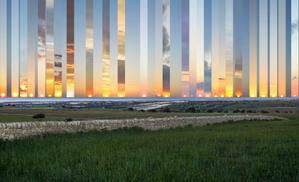Loading...
Related Media
Where the Sun Sets Every Month
Caption: Taken with a smartphone from San Rafael, Bulacan, Philippines, this series of images capture the changing position of sunset over the year owing to Earth’s axial tilt and orbit around the Sun. From January to December 2022, each image reflects the changing backdrop and position of the Sun at dusk. Observe the changing foliage and the appearance of an electricity pole in October. This collection serves as a visual testament to the celestial dance between Earth and the Sun, and the natural transformations on the ground.
Credit: John Paul Pile/IAU OAE (CC BY 4.0)
Credit: John Paul Pile/IAU OAE (CC BY 4.0)
License: CC-BY-4.0 Creative Commons نَسب المُصنَّف 4.0 دولي (CC BY 4.0) icons
The Path of the Sun
Caption: This enchanting image, captured in Germany between 21 June 2018 and 21 December 2018, is a poetic blend of art and science, showcasing nature's rhythm and the passage of time. It combines images taken at different times of day over the course of six months. Each curve tracks the Sun’s path (or arc) across the sky on a particular day. The sweeping arc of the Sun is distorted here by the projection, making it appear like a curve. The position of the daily arc across the sky changes with the Sun’s seasonal movement in the sky. Captured using a simple pinhole camera fashioned from a coffee can, it shows the Sun's journey over the course of six months, and the gradual shift of the daily arc from the summer, when it is higher in the sky, to its lowest arc at the winter solstice. Gaps in the Sun’s path represent days or times of day when the Sun was obscured by clouds. This image is a vivid testament to the changing seasons, revealing the Sun's dance in the sky as days grow shorter or longer.
Credit: Frank Niessen/IAU OAE (CC BY 4.0)
Credit: Frank Niessen/IAU OAE (CC BY 4.0)
License: CC-BY-4.0 Creative Commons نَسب المُصنَّف 4.0 دولي (CC BY 4.0) icons
Solstices and Equinox
Caption: This captivating image showcases the journey of the Sun through the sky during the winter solstice (bottom), equinox (middle), and summer solstice (top) in Bursa, Turkey, between 21 December 2007 and 20 June 2008. Using a fisheye lens, the photographer captured the Sun's positions at regular intervals from sunrise to sunset on the three different days, illustrating the changing lengths of day and night throughout the year. The variations in the Sun’s daily path across the sky, its height at midday, and the positions of sunrise and sunset, as well as the length of a day, depend on Earth’s axial tilt relative to its orbit around the Sun. The series was taken from a rooftop in Bursa, where the local terrain adds its own unique touch by occasionally obstructing the horizon. Oriented with north at the top and south at the bottom, this visual diary serves as a stunning representation of the Sun’s path for those residing in mid-northern latitudes.
Credit: Tunç Tezel/IAU OAE (CC BY 4.0)
Credit: Tunç Tezel/IAU OAE (CC BY 4.0)
License: CC-BY-4.0 Creative Commons نَسب المُصنَّف 4.0 دولي (CC BY 4.0) icons
Occasive Amplitude
Caption: Captured from Gatto Corvino village in Sicily, this composite showcases the Sun setting at various points over the sea from the winter to the summer solstice (2016–2017). The centre frame marks due west. As Earth orbits the Sun, the position of the setting (and rising) Sun changes from being northward of due west (east) in summer to southward of due west (east) in winter. During the equinoxes — when day and night are of equal length — the Sun rises directly in the east and sets directly in the west. The changing location of the Sun on the horizon is due to Earth’s axial tilt as it orbits the Sun. In temperate regions of Earth, the Sun’s height above the horizon at noon is at its highest and lowest points in the sky on the summer and winter solstices respectively.
Credit: Marcella Giulia Pace/IAU OAE (CC BY 4.0)
Credit: Marcella Giulia Pace/IAU OAE (CC BY 4.0)
License: CC-BY-4.0 Creative Commons نَسب المُصنَّف 4.0 دولي (CC BY 4.0) icons












